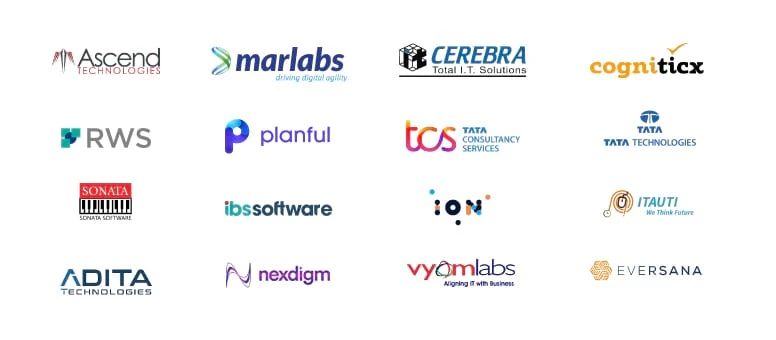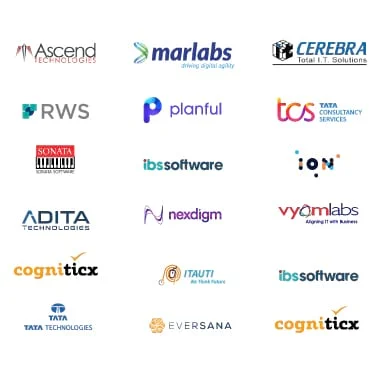30+ Hrs
Hands On Training
Lifetime Access
Updated Content
Customizable
Learning Paths
Industry Expert
Mentors
Projects
Advanced Interactive

Hands On Training
Updated Content
Learning Paths
Mentors
Advanced Interactive
In a virtualization context, a checkpoint is a snapshot of the status of a virtual machine. Like the Windows operating system restore stage, the checkpoint allows the administrator to return the virtual machine to a previous state. Checkpoints are most widely used to build backups prior to updates. If an upgrade fails or causes problems, the administrator may restore the virtual machine
HKR delivers the best industry-oriented checkpoint training course that is in line to clear the certification exams. Our course covers all the key concepts such as key fundamentals of checkpoint, checkpoint concepts,deployment platforms, security policies, checkpoint VPN, authentication, UTM, advanced firewall features, etc. During the training period, you can get full support and real-time project assistance from experienced professionals. Enroll today at HKR for accepting the new challenges to make the best out of our checkpoint online training.
To apply for the Checkpoint Training, you need to either:
The Checkpoint course curriculum is structured to streamline the learning process by a team of experts. You can find the complete course details in below-mentioned modules:
1.1 Checkpoint certified security administrator
1.2 What’s new in checkpoint R77.10
1.3 Checkpoint’s Architecture
1.4 Implementing 3 tier Architecture of checkpoint
2.1 Checkpoint supported platforms
2.2 Installing Checkpoint on Windows o/s
2.3 Installing Checkpoint on Linux o/s
2.4 Installing Checkpoint on SPLAT
2.5 Installing Checkpoint on GAiA
2.6 Configuring checkpoint in standard setup
2.7 Configuring checkpoint in a distributed setup
3.1 Understanding Checkpoint Licensing
3.2 VerifySIC establishment between the Security Management Server and the Gateway using 3.3 Smart Dashboard
3.4 Creating a basic Rulebase
3.5 Implicit rules vs Explicit rules
3.6 Configuring hide NAT
3.7 Configuring Static NAT
4.1 Configure user and group accounts in checkpoint
4.2 Configure policies for authentication
4.3 Local Authentication Methods
4.4 Configuring user authentication
4.5 Configuring Session authentication
4.6 Configuring Client Authentication
5.1 Creating LDAP and TACACS+ objects
5.2 Integrating active directory server with checkpoint gateway
5.3 Configuring Tacacs+ server
5.4 Integrating Tacacs+ server with checkpoint gateway
6.1 Introduction to Identity Awareness
6.2 Configuring Identity Awareness
6.3 Using Identity awareness to provide access to a network resource
7.1 Understanding VPN terminology
7.2 Configuring Remote access VPN
7.3 Implementing site-to-site VPN with head office and Branch office
8.1 Using Smart View trackers for Analyzing logs
8.2 Using Smart View Monitor for monitoring traffic
8.3 Using queries in Smart View tracker
8.4 Filtering logs in SmartView tracker
9.1 Debugging firewall Modules
9.2 Upgrade and troubleshoot Management server
9.3 Performing Backup of the Management server
9.4 Backup using snapshot
9.5 Backup using cpbackup
9.6 Backup using upgrade tools
10.1 Understanding standard mode and Expert mode shells
10.2 Running Checkpoint commands
10.3 Accessing Firewall Directory
11.1 Configuring Antivirus blade in checkpoint gateway
11.2 Verifying Antivirus modules
11.3 Implementing content filtering
11.4 Configuring CVP and ufp policies
11.5 Configuring URL filtering
11.6 Testing URL filtering
12.1 Checkpoint security expert
12.2 Debugging firewall Modules
12.3 Upgrade and troubleshoot Management server
12.4 Performing Backup of the Management server
12.5 Backup using snapshot
12.6 Backup using cpbackup
12.7 Backup using upgrade tools
13.1 Configuring IPS blade
13.2 Updating IPS signatures
13.3 Configuring IPS policies
13.4 Customizing IPS profiles
13.5 Implementing location-based restrictions
13.6 Verifying IPS
14.1 Understanding Checkpoint QoS architecture
14.2 Enabling QoS blade
14.3 Bandwidth Monitoring using QoS
14.4 Segregate Bandwidth to different networks
14.5 Writing QoS policies in a rule base
15.1 Building clusterXL for load balancing
15.2 Adding gateways into a cluster
15.3 Verify Load balancing
15.4 Building clusterXL for High Availability
15.5 Deploying HA on an Enterprise network
15.6 Verifying HA using smartview monitor
15.7 Management server Clustering
15.8 Management server recovery
In this project, we will discuss How Check Point Anti-spoofing makes sure that packets go to the correct interface according to th.....e destination IP address. Read more
This Project discusses Check Point Application Control provides the industry’s strongest application security and identity c.....ontrol to organizations of all sizes. Read more


The Checkpoint training course benefits for the following list of professionals.
To start with the Checkpoint training course, you need to check with the best institute that delivers knowledge. Before proceeding to join any training, take suggestions from the experts who had already learned the course. We at HKR, with a team of industry experts, are ready to fulfil your dream career to achieve a job in desired companies.
Once you complete the entire course along with real-time projects and assignments, HKR delivers the course completion certification. This certification helps to get a job in any company very quickly.
Our trainers are highly qualified and certified with many years of industry experience with a technical background in Checkpoint.
Certification differentiates you from the non-certified peers, and you can demand the best salary in the leading companies.
We, at HKR, provide complete guidance to reach your dream job. But your job will be based on your performance in the interview panel and the recruiter requirements.
Ans: HKR Trainings giving CheckPoint Related Courses, Like CCSE Training etc,.
Each and every class is recorded so if you missed any class you can review the recordings and clarify any doubts with the trainer in next class.
Yes, we don’t assure 100% placement assistance. We are tied up with some corporate companies so when they have a requirement we send your profiles to them.
Yes, we provide demo before starting any training in which you can clear all your doubts before starting training.
Our trainers are real time experts who are presently working on particular platform on which they are providing training.
You can call our customer care 24/7
Max of the students get satisfied with our training, if you are not then we provide a specialised training in return.
For Assistance Contact:
![]()
![]() +91 9711699759
+91 9711699759
Query